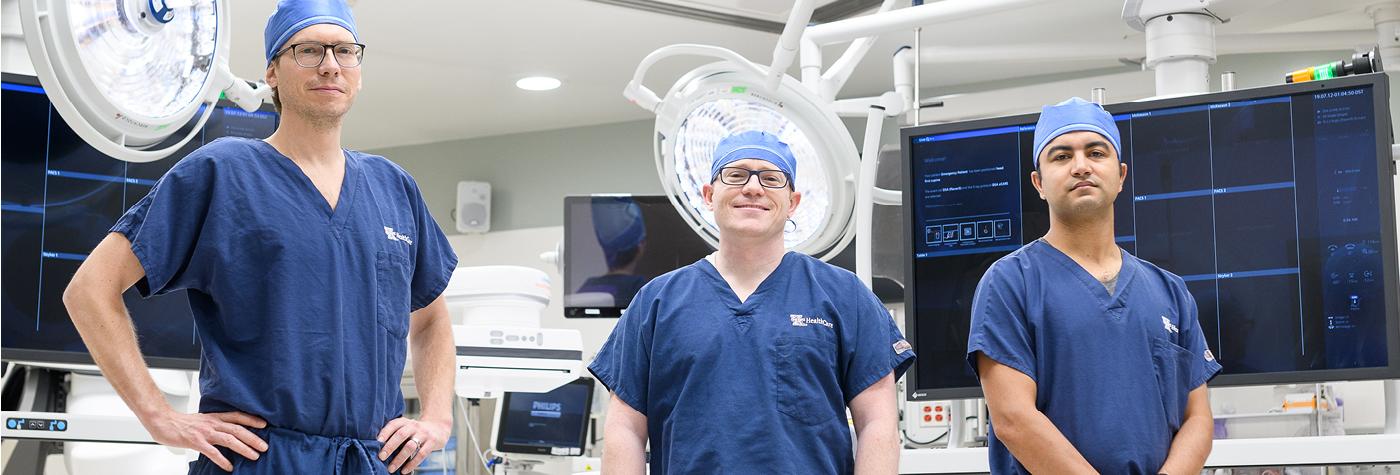Stopping A Stroke Before It Starts
Minimally-invasive procedure expands treatment arsenal for carotid artery disease
One of the major causes of stroke in the United States is due to carotid artery disease, the buildup of plaque in one or both of the arteries in the neck.
The good news is that there’s a new option for severe cases of carotid artery disease, and the UK Gill Heart & Vascular Institute is among the first in the state to offer it: TransCarotid Artery Revascularization (TCAR). TCAR is a minimally invasive and safe approach for high surgical risk patients who need carotid treatment. If left untreated, carotid artery disease – which is diagnosed in 400,000 people every year in the U.S. – can often lead to stroke.
Patients with severe carotid artery disease previously turned to an open surgical procedure called carotid endarterectomy. Although this method removes plaque from inside the carotid artery to restore normal blood flow to the brain, patients are at risk for surgical complications, including bleeding, infection, heart attack, and cranial nerve injuries that can cause issues with swallowing, speaking and sensation in the face. Patients were also left with a large visible scar the length of the neck.
What makes TCAR different
TCAR is unique because blood flow is temporarily reversed so that small bits of plaque can break off and divert away from the brain, thus preventing a stroke. Then, a stent is placed inside the artery to stabilize the plaque. This less invasive method has very low rates of cranial nerve injury and myocardial infarction due to a minimal incision near the clavicle and the transcarotid approach.
Gill surgeon Dr. Samuel Tyagi performs the highest volume of TCAR procedures in the state.
“TCAR utilizes the benefits of both open surgery and stenting to achieve the lowest perioperative stroke and complication rates ever recorded,” Tyagi explained. “Patients recover much faster and have much less pain as a result.”
Quicker recovery time, less pain and smaller scars make TCAR an invaluable addition to the numerous other resources available at the Gill Heart & Vascular Institute.

